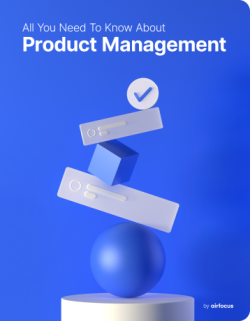As a PM, you are responsible for prioritizing what problems development teams should solve next by actually spending time on the discovery, analyzing data and communicating with stakeholders, clients and customers and understanding and refining the problem. As part of this responsibility, saying ‘no’ to ideas, feature requests, suggestions to solutions or even urgent demands from stakeholders becomes important. Saying no is one of the most powerful ways of delivering value to your customer, team and organization.
However, saying no is tricky, especially when it comes from senior stakeholders and in most circumstances, you do not have the authority to say no.
The trick to saying no is to understand when to say no, how to say no and when to say not right now.
Irrespective of who the request comes from don’t say no too quickly as you may discourage a culture of contribution which is key to collaboration, your success and your product’s success.
When you say no, you might end up disappointing your stakeholder or you might be turning down an interesting opportunity to explore. Some may even consider you as someone who is not a team player. It is hypercritical to learn in these circumstances how to say no or if you should say no to ensure you are able to preserve relationships while delivering value.
In the below article we will look at
how to address the 4 key problems to say No, using 5 different tactics
what you should do before you say No
To say no there are 4 key problems to address
Stakeholder expectations
Doing it without authority
Having the negotiation power to do so
Trust of stakeholders

5 Methods
1. Data - Have the right data to back your points through your products data analytics
Becoming the expert on your product and its customers is key. To do this you require the relevant data such as user feedback, usage reports, competitive information, revenue and sales details. Key data points about usage analytics provide insights into customers' pain and gain points allowing you to back the features that solve customer problems and improve the experience which in turn drives retention and loyalty. For pre-revenue products or product managers working in startups, this may be hard to collate as there will be limited access to this data. However, forming a hypothesis here with the data you have will help you drive decisions. The key is to ensure that most decisions are backed by data.
2. Market Insights – have the market research to determine if the request adds a competitive edge or not to the product and business
Market insights can be a powerful tactic when it comes to becoming the domain expert of your product and being able to manage stakeholder expectations and require good insight into market research. This then can allow you to identify and validate high-value requests from stakeholders fast. To do this, you will have to learn about the potential customers and competition, by identifying the market needs, target audience and customer problems through methods such as market segmentation and documentation of customer journeys to evaluate the opportunities in those segments. Further to this, competitor feature analysis and conducting a SWOT analysis will help solidify insights into your ability to say no. It also provides a ground for defining and testing new product concepts to determine the priority of features and what scope needs to be built. This is also the place and time to test out product pricing, feature and value prop, high-level customer interest and satisfaction with your product. All together, these insights will help drive decisions for a product manager based-on market insights backed by competitor analysis and help you to say no.
3. Prioritization frameworks – have a framework to determine the predictability of value and capacity to deliver any request
In order to build out a composite product strategy, a product manager should have an agreed way of prioritizing things as we do not have infinite resources and capacity to do everything. There are many different prioritization frameworks that allow you to show the reasoning behind your prioritization decisions from the predictability of the value, impact to business and revenue to the effort required to deliver. This forms a part of your product strategy and allows you to build a product roadmap. Furthermore, a framework allows you to manage the stakeholders’ expectations and help say no to something that doesn’t align with the product strategy or differ the low-value requests to a later time. It also demonstrates a level of transparency which helps build trust with the team and stakeholders. When saying no using the prioritization framework it is important to display the impact, opportunity cost and alternative while thanking the person for the idea.
4. Lobbying – using circles of influence to say no
As a product manager, lobbying is the skilful art of influencing parties of stakeholders to align and sometimes influence the course of decisions with other stakeholders through the art of persuasion. The success of lobbying depends on the ability to build trust and relationships to persuade them to see things your way. Lobbying can allow a product manager to influence decisions and thoughts beyond their level of control and authority by influencing people who may be close to the senior stakeholder. It allows you to influence things beyond your circle of control and also sometimes pushback on poor ideas which come from senior stakeholders by using other stakeholders' circles of control, influence and authority. For example, when dealing with a very senior stakeholder such as a founder or CEO, it becomes hard to say no, simply because you may not have the authority to overwrite their authority or may lack their trust, this is where lobbying comes in by aligning yourself with fellow stakeholders who might be in the CEO’s circle of influence. Further to this, lobbying also allows a product manager to have other stakeholders that would support the no so they might not appear hostile. In larger organizations where decentralization has taken its natural course due to scale, there are governance processes that require multiple decision makers and this is where lobbying can help influence the outcome of a request.
5. Guiding principles – set principles to help guide alignment on how the decisions will be made for the product
Guiding principles are a set of values and accepted behaviors which help set the ground rules for indirectly saying no to stakeholders. In order to set guiding principles that would be adopted and accepted by stakeholders, it is important to have them present in a workshop to set these. This helps build alignment on how you work.
Below are examples of a few principles that you can use
Do things that make the customer Wow!
Be Inclusive
Inspire customers and make money
Maximize impact on the mission
Data-driven decisions

Before you say no
1. Be empathetic and acknowledge the request
It is important that the person making the request feels heard as it is meaningful to them. To do this, a product manager must reserve judgement and let the stakeholder express themselves without interruption. The product manager must acknowledge their request by using affirmative body language and repeat what they have said after they complete their request to confirm your understanding of it.
2. Understand where the idea originates from and why it’s so important
When a request comes whether it be a feature request idea, it is important to understand how this aligns with your company’s larger strategic objectives and furthermore your product strategy. Quite often than not, senior stakeholders are in the know of confidential information that they may or may not be able to disclose. A classical example here can be a merger or acquisition deal that may happen if the product team is able to deliver certain features or drive certain revenue margins. In this case, the product manager must be discretional and sensitive to the request.
3. Define and explore the problem statement
After acknowledging the request, it is important to do a preliminary analysis on who the target audience for the change is and what problem is being solved. This is where the 3 tactics mentioned above come in – market insights, data insights and prioritization through value. In order to say no, you must have measurable data and insight in accordance.
4. Validate the idea, map the opportunities and identify the outcomes
Once you have an understanding of the problem statement, you must be able to map out the opportunities and validate the ideas. A great technique to use here is the one which Teressa Torres describes in her book continuous discovery habits around opportunity solution tree mapping. This method helps validate the multiple opportunities that exist and how they relate to business and customer needs.
5. Summarize and explain
Before you go back to any stakeholder is critical to have a summary of your work and a record of the key findings. This can help you influence your stakeholder’s decision and work towards saying no to things that don’t add value or prioritize things that do add value.
Lastly, it is important to explain what you have found and why you think the request doesn’t generate value or align with the business or product strategy.

KJ Sethna

Read also
Experience the new way of doing product management






